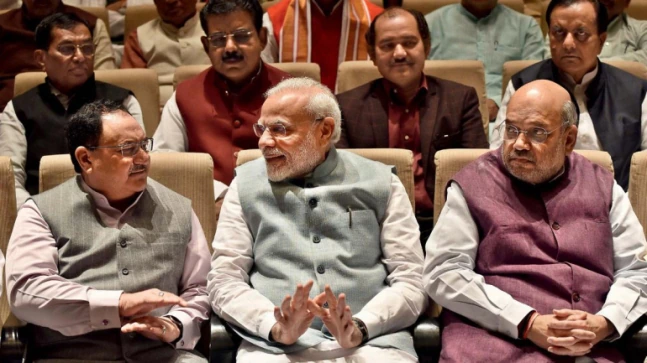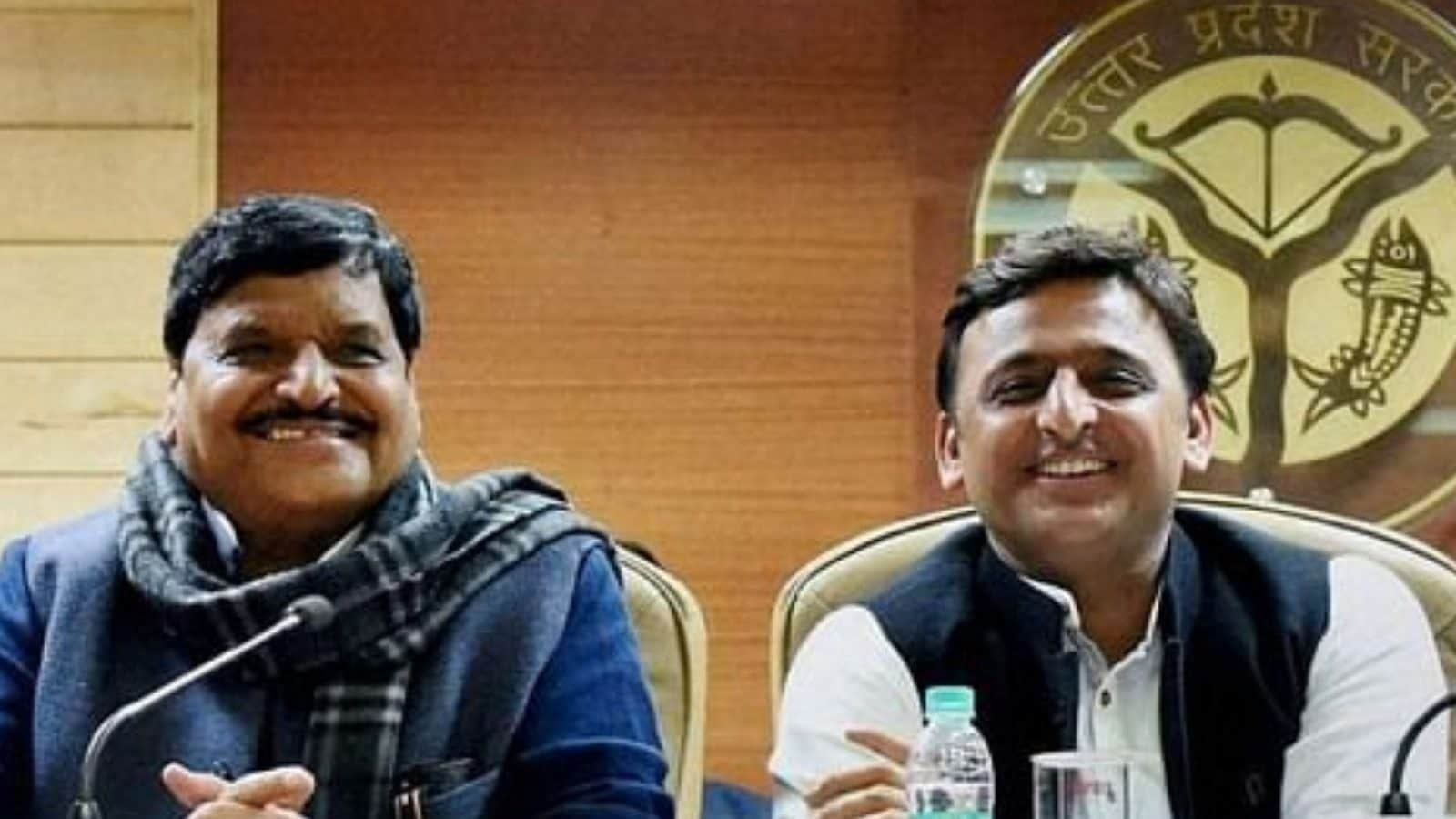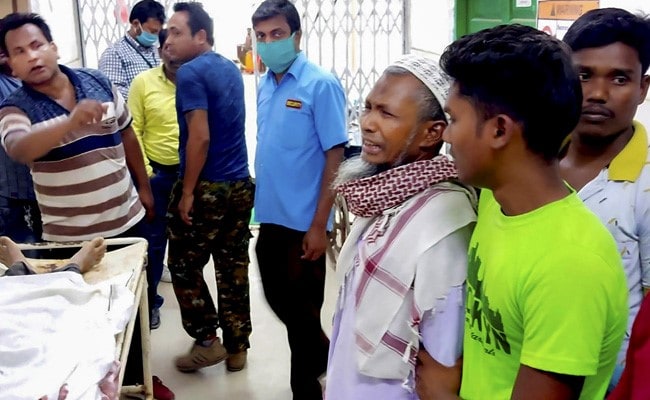On July 30, the Union cabinet cleared the decks to give 27 per cent reservation to candidates from the Other Backward Classes (OBC) and Economically Weaker Sections (EWS) in the all-India quotas for undergraduate and postgraduate medical/ dental courses. The decision appears to be politically timed, as just months from now, five states go to the polls.
The ruling Bharatiya Janata Party (BJP) is obviously calculating its electoral dividends from this. Taking a piecemeal view, this could be thought of as a one-off effort to score brownie points before the elections, but party sources say it’s just another piece in the BJP and Sangh parivar’s larger plan to change the party’s image. The BJP top tier, consisting of Prime Minister Narendra Modi, home minister Amit Shah and party chief J.P. Nadda, are rebuilding the party with a focus on a convergence of castes—largely from the OBCs and Dalits—as a winning formula while simultaneously building a new leadership category of women and younger party leaders.
The new BJP is not only chasing the OBCs for votes but is also looking at their younger generation for its cadre and leadership positions. To this end, in Maharashtra, the party is anchoring the movement to protect OBC reservation in local bodies. Governor Bhagat Singh Koshyari has even written to Maharashtra chief minister Uddhav Thackeray asking him to postpone the local body election since a decision on quotas is pending (the fight has reached the apex court). In Punjab, after the divorce with the Akali Dal, the BJP is consolidating its base among the OBCs (31.3 per cent of voters) and Dalits (31.9 per cent) with commitments on larger political representation and equitable reservation in education as well as government services. In poll-bound Uttar Pradesh, the party has formed OBC (non-Yadav) and Dalit (non-Jatav) caste coalitions and is trying to consolidate them. The Centre is also working on the 127th Constitution Amendment Bill which will restore powers to the states and Union territories to draw up their own OBC lists. A May 5 Supreme Court order had taken this away from the state governments, saying a 2018 law confines such powers to the Centre.

In the past seven years, the Sangh Parivar and the BJP had put out a Hindutva version of nationalism-populism that has gained traction with several communities among the Dalits, OBCs and STs. It also had to do with the voter chemistry Modi created—for the first time, the BJP had a leader who was an RSS product and also belonged to an OBC caste. This allowed the BJP and the Sangh to shed its image of being a Brahmin and Bania outfit—the ’90s leadership of two Brahmins (Atal Bihari Vajpayee and Murli Manohar Joshi) and a Bania (L.K. Advani) had cemented this narrative. Even the second-rung leadership was monopolised by Brahmins then, with Pramod Mahajan, Arun Jaitley, Sushma Swaraj and Anant Kumar. The RSS leadership too was dominated by pracharaks from these two communities.
Today, party president J.P. Nadda is a Brahmin as is B.L. Santhosh, but the other eight general secretaries are from other castes. They are all in their mid-50s too, except for D. Purandeswari, who is 62. The BJP has come a long way from the Mandal days where it built its electoral fortunes championing the anti-reservation movement and securing the upper caste vote base. Modi has played a big role in this too, presenting himself as the chaiwala-come-good, a self-made man and the perfect antidote to the Mandal politics of regional parties while also appealing to the middle-class upper castes. To appease the latter, the cabinet has kept 10 per cent seats for the economically weaker sections in medical colleges.
With the recent cabinet reshuffle, Modi’s government now has 27 OBC and 12 Dalit ministers (out of a total 78)—among the most representation the backward castes have got in independent India. In the past two decades, the BJP benefited massively from the collapse of the Janata Dal and the large-scale migration of political leaders from parties like the Samajwadi Party, Bahujan Samaj Party and Congress. At the state level, the BJP and Sangh Parivar are working on a coalition of castes to counter those who have traditionally been mobilised against the party. They realise that a big flashpoint is the cornering of reservation benefits by a few sections. So, in UP, the BJP is banking on the anger against the Yadavs (diehard SP voters) and Jatavs (BSP’s main vote-bank) for having cornered most of the resources and reservation benefits.
The next big task is to convert caste cohorts to the BJP ideology. Sangh Parivar leaders say the recruited defectors can help during election time, but they don’t contribute much in building the organisation. “The BJP under Modi did not attract OBC and Dalit voters just because of his backward caste and Hindutva; his governance synergised the caste politics in the name of development and class,” argues Shri Prakash, professor of political science at the University of Delhi.
After opposing it for more than three decades, there is also a huge lobby in the BJP-Sangh Parivar which now believes the country needs a caste-level census—as originally demanded by the Janata parivar. The Bihar assembly has passed a resolution favouring caste-based census twice, which was supported by the BJP as well. The census data now collates stats on SCs and STs but not on the Backward Classes. In 2018, the Modi regime had started initial work on caste-based data, but the exercise was later dropped due to internal pressures. But top BJP sources say the issue is under consideration now, even as the government publicly opposed such a census in Parliament in July (see Counting the Castes in Upfront).
“In UP, the BJP has the attention of three sets of communities—the upper castes and a section of the OBCs and the Dalits, but we don’t have a substantial cadre base among the latter. Efforts are on in this regard,” says a top RSS leader. This includes giving tickets to community leaders in local body polls, building up their social icons, engaging with sect leaders etc. The Sangh’s plan to get OBC and Dalit youth into RSS ranks has got a boost with the Ram Mandir construction at Ayodhya, for several volunteers from these communities have stepped up. But these efforts will require “not just political will but social change as well”, says the RSS leader.
Keeping it young
The new-look BJP also wants more female and youth participation in politics. So Shah, Nadda, Santhosh and defence minister Rajnath Singh have been tasked to identify young talent—educated, qualified professionals, especially from among women, OBCs, Dalits and tribals—who can be groomed as future leaders. A top BJP leader argues that the caste-based outfits collapsed after their rise in the 1990s as they had little to offer beyond reservation commitments. “The grooming of the younger generation and women leaders is part of the future expansion strategy,” he says.
In the recent cabinet reshuffle, Nisith Pramanik, 35, was the youngest minister. The average age of the council of ministers came down to 58, with 72-year-old MoS Som Prakash the eldest. The central decision is reflecting in BJP-ruled states too. In Karnataka, B.S. Yediyurappa, 78, was replaced by his protégé B. Bommai, 61; and Pushkar Singh Dhami, 43, replaced Tirath Singh Thakur, 56, in Uttarakhand. Similarly, Sushil Modi, 69, made way for younger leaders Tarkishore Prasad and Renu Devi in Bihar. Incidentally, ex-RSS chief K.S. Sudarshan had suggested the 75-year bar to ease out Vajpayee and Advani.
To continue Mission Kamal down south, the BJP is relying heavily on new caste combinations and young leaders who they feel are in for the long haul. In July, K. Annamalai, 36, was appointed Tamil Nadu unit chief; Telangana unit chief Bandi Sanjay Kumar is 50, while in Karnataka Nalin Katil is 55. Among the state unit chiefs, C.R. Patil, 66, of Gujarat, is the eldest. Similarly, in Nadda’s team, all the general secretaries are under 56 years; Nadda himself is 60. Apart from giving fresh legs to the organisation, the younger-generation leaders also bring in a new set of loyalists for the Modi-Shah duo. In March this year, a generational shift happened in the RSS as well. Suresh Bhaiyyaji Joshi, 73, made way for Dattatreya Hosabale, 66, as general secretary or sarkaryavah; Arun Kumar, 57, and Ramdutt Chakradhar, 58, joined the team of five sah-sarkaryavahs. Arun Kumar also took over the liaison work with the government from Krishna Gopal, 66.
Meanwhile, BJP Mahila Morcha chief Vanathi Srinivasan points out how women are taking on more responsibility in the party. The 75-member BJP national executive now has 12 women; 5 of 12 vice-presidents are also female. The recent cabinet reshuffle expanded the number of women ministers to 11—one more than in Manmohan Singh’s time—and except for finance minister Nirmala Sitharaman, all are from the Lok Sabha. All in all, it’s a time of radical change in the BJP organisation, one the party hopes will take it to greater heights.




